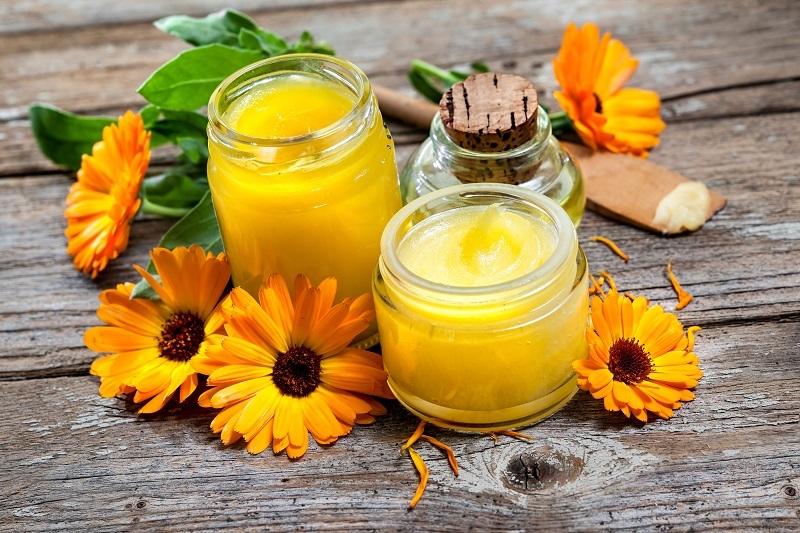Decode the Symbolism of Birth Flowers to Understand Yourself Better
Posted on 13/08/2025
Decode the Symbolism of Birth Flowers to Understand Yourself Better
Have you ever wondered what your birth flower means? Beyond their fragrant presence and vibrant colors, birth flowers are brimming with hidden symbolism and fascinating stories. Exploring the unique message of your birth flower can reveal new insights about your personality, strengths, and desires. In this comprehensive guide, we'll decode the symbolism of birth flowers and show how understanding their meanings can help you know yourself--and your loved ones--on a deeper level.

What Are Birth Flowers?
Birth flowers are special blooms assigned to each month of the year, much like birthstones. This tradition started centuries ago and exists in various cultures worldwide. Each birth flower is believed to hold distinct qualities and symbolic meanings that reflect the personality of individuals born in that month.
Why do people love discovering their birth flower? Besides celebrating birthdays and special occasions, choosing birth flowers:
- Provides a personalized touch to gifts and celebrations
- Connects you to nature in a unique and meaningful way
- Reveals symbolic insights about your personality traits
- Defines your aesthetic preferences through floral themes
Unveiling the Symbolism of Each Birth Flower
Let's take a month-by-month journey to decode the meaning of birth flowers and discover what they say about you.
January: Carnation & Snowdrop
Carnation: Known for its ruffled petals and rich colors, the carnation embodies devotion, love, and strength. People with this birth flower are often loyal, resilient, and full of admiration for others.
Snowdrop: Delicate yet hardy, the snowdrop bursts through the snow, symbolizing hope, purity, and renewal. If this is your flower, you may be optimistic and deeply compassionate.
February: Violet & Primrose
Violet: The violet represents modesty, faithfulness, and wisdom. Those with this birth flower are often introspective, insightful, and value spiritual connections.
Primrose: As the first bloom of spring, primroses signify youth and new beginnings. If you were born in February, you may be adaptable and cherish moments of innocence and growth.
March: Daffodil
Daffodil: Bright and cheerful, the daffodil is a sign of rebirth, joy, and optimism. People with this birth flower bring warmth to others and are natural motivators who thrive on uplifting those around them.
April: Daisy & Sweet Pea
Daisy: Symbolizing innocence and purity, the daisy is linked with truth and simplicity. If you share this birth flower, you likely possess a sincere heart and a playful spirit.
Sweet Pea: Associated with gratitude and blissful pleasure, the sweet pea suggests you are sensitive, appreciate beauty, and have a knack for creating harmony in relationships.
May: Lily of the Valley & Hawthorn
Lily of the Valley: This dainty blossom represents humility, sweetness, and return of happiness. Those who resonate with it typically bring comfort and light to their community.
Hawthorn: Often symbolic of hope and supreme happiness, the hawthorn flower suggests a resilient and caring nature.
June: Rose & Honeysuckle
Rose: The classic rose stands for love, passion, and beauty. June-born souls with this birth flower are often romantics at heart, with strong emotions and creative talents.
Honeysuckle: Denoting sweetness and enduring bonds, honeysuckle people are loyal friends and passionate companions.
July: Larkspur & Water Lily
Larkspur: This tall and vibrant flower symbolizes open-heartedness and positivity. If you identify with larkspur, you likely approach life with enthusiasm and charm.
Water Lily: Representing purity and enlightenment, water lily individuals are serene, creative, and deeply intuitive.
August: Gladiolus & Poppy
Gladiolus: With its sword-shaped stems, the gladiolus signifies strength, honor, and integrity. August-born individuals with this birth flower are seen as determined and honest, inspiring those around them.
Poppy: Embodying imagination and remembrance, the poppy suggests a visionary spirit and a sensitive, appreciative nature.
September: Aster & Morning Glory
Aster: This star-shaped bloom represents wisdom, faith, and valor. Aster people are often thoughtful, kind, and admired for their loyalty.
Morning Glory: Symbolic of affection and tenacity, morning glory spirits are resilient and find joy in connecting with others.
October: Marigold & Cosmos
Marigold: Bright and bold, the marigold stands for creativity, warmth, and passion. Born in October? You're likely vivacious, resourceful, and unafraid to express yourself.
Cosmos: Associated with balance and order, cosmos individuals seek harmony and often possess strong organizational skills.
November: Chrysanthemum
Chrysanthemum: Revered in many cultures, the chrysanthemum symbolizes loyalty, longevity, and joy. November-born people radiate positivity and are treasured friends who bring happiness wherever they go.
December: Narcissus & Holly
Narcissus: This winter bloom represents rebirth, hope, and self-reflection. If you're a December baby, you may possess a gentle strength and the wisdom to grow continually.
Holly: Symbolizing protection and festive spirit, holly-natured individuals are nurturing, resilient, and love bringing people together.
How to Use Birth Flower Symbolism for Self-Discovery
Understanding the symbolism of birth flowers is much more than a novelty; it offers a unique lens for self-reflection and personal development. Here's how you can harness the power of your birth flower to better understand yourself:
- Reflect on Personal Traits: Ask yourself if the characteristics of your birth flower match your personality. This process can highlight hidden strengths or areas for growth.
- Boost Self-Confidence: Embrace the positive attributes symbolized by your birth flower. For instance, a November chrysanthemum can remind you of your enduring joy and loyalty.
- Set Intentions: Use your birth flower as an inspiration for setting new personal goals. If you're a March daffodil, seek new opportunities for optimism and personal renewal.
- Create Mindful Rituals: Incorporate your birth flower into meditations, journals, or creative projects. Visualize its colors, textures, and essence to tap into its symbolism.
- Strengthen Relationships: Share the meaning of someone's birth flower as a thoughtful way to connect or celebrate their uniqueness.
Beyond the Basics: Explore Alternative Birth Flower Traditions
While the twelve-month system is popular, there are alternative ways to decode the symbolism of birth flowers. Some traditions assign zodiac flowers based on astrological signs or days of the week, revealing even more layers to your personality and destiny.
- Zodiac Flowers: For example, Aries (March 21 - April 19) may be associated with honeysuckle or thistle, while Libra (September 23 - October 22) could correspond to the rose or hydrangea.
- Cultural Variations: In Japan, the Hanakotoba tradition attributes specific meanings to flowers, emphasizing subtler emotional messages.
- Floriography: The Victorian-era "language of flowers" offers another layer of symbolism for communicating secret messages through blooms.
Choosing to explore alternative birth flower traditions can add a richer, more personalized understanding of your unique qualities and potential.
Birth Flower Symbolism in Modern Life
Today, birth flowers are more than just a tradition--they have become popular in personal branding, gift-giving, and holistic wellness. Here are some creative ways to integrate your birth flower's symbolism into everyday life:
- Jewelry & Fashion: Wear pendants, earrings, or clothing embroidered with your birth flower's image for luck or emotional support.
- Home Decor: Display artwork, prints, or even fresh flowers related to your birth flower to create a nurturing environment.
- Meditation & Mindfulness: Focus on your birth flower's color and form as an anchor during meditation to channel its positive energies.
- Tailored Gifts: Create personalized floral bouquets or keepsakes for birthdays, anniversaries, or baby showers.
Birth Flowers: A Bridge to Understanding Others
Learning the meaning of each month's birth flower not only deepens your self-understanding but also helps foster empathy and appreciation for the people in your life. When you recognize someone's birth flower qualities--whether it's the loyalty of a chrysanthemum or the creativity of a marigold--you gain insights into their motivations, needs, and strengths.
To put this into practice:
- Research loved ones' birth flowers and weave their symbolism into conversations, notes, or celebrations.
- Acknowledge a friend's gladiolus-like determination or a partner's gentle, nurturing violet spirit.
- Create joint rituals, such as planting each other's birth flowers together.

Common Questions About Birth Flower Symbolism
-
Can my birth flower change?
Most birth flowers are assigned based on your birth month, but cultural or regional traditions may vary. -
What if I have two birth flowers?
Embrace both! Many months have alternative birth flowers, offering an even wider spectrum of qualities to reflect upon. -
Is my birth flower's symbolism accurate?
Symbolism is meant to be inspirational, not definitive. Use it as a starting point for self-reflection. -
Can I relate to a different month's birth flower?
Absolutely! If another bloom resonates with you, explore its symbolism for further self-awareness.
Tips to Deepen Your Connection with Your Birth Flower
- Visit botanical gardens to see your birth flower in person and observe its qualities firsthand.
- Grow your birth flower in a garden or pot to cultivate resilience and daily mindfulness.
- Incorporate your flower into creative projects like paintings, journals, or digital art.
- Study its history in different cultures, myths, and literature for a richer perspective.
Conclusion: Let Birth Flowers Guide Your Self-Discovery Journey
Unlocking the symbolism of birth flowers can illuminate new paths for self-discovery, reflection, and personal growth. Whether you're captivated by the passionate rose or the optimistic daffodil, these beautiful blooms offer a unique window into your spirit and help you decode the deeper stories within. As you embrace the tradition of birth flowers, you not only get to know yourself better but also build more meaningful connections with loved ones. Take a moment today to discover your birth flower--and let its symbolism inspire your journey towards self-understanding and fulfillment.





